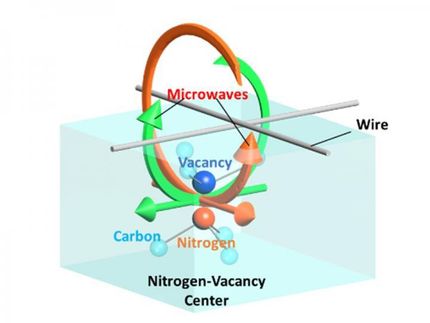Team devises new technique to probe 'noise' in quantum computing
Dartmouth College and Griffith University researchers have devised a new way to "sense" and control external noise in quantum computing.
Quantum computing may revolutionize information processing by providing a means to solve problems too complex for traditional computers, with applications in code breaking, materials science and physics, but figuring out how to engineer such a machine remains elusive.
"Quantum noise spectroscopy" is an emerging field within quantum physics that seeks to characterize and control the noise affecting quantum systems. Quantum systems, which include tiny objects such as atoms, electrons and photons, display counterintuitive properties, such as the ability to be in a superposition of two different states simultaneously. These quantum properties are essential for quantum computing, but they are easily lost through decoherence, when quantum systems are subject to "noise" in an external environment. Because a quantum system is always embedded in a larger environment, some noise is unavoidable. A quantitative understanding of environmental noise is, therefore, crucial to accurately model the behavior of quantum systems and determine whether they can perform in applications such as quantum computing.
Quantum noise spectroscopy offers an elegant solution to this challenge by using a quantum system as a "probe" of its own environment. Typically, an experimenter may control the state of a quantum system through the application of external fields, such as optical or magnetic fields. In a quantum noise spectroscopy protocol, the quantum system is subjected to a "control sequence" -- that is, a suitably designed application of these fields. The quantum system evolves dynamically due to both the control sequence and the unavoidable interactions with the environment. Careful selection of control sequences combined with measurement of the quantum system enables the researchers to extract information about the environmental noise.
"Prior to our work, quantum noise spectroscopy had two major shortcomings: it was restricted to environmental noise that was (1) classical and (2) Gaussian," says co-author Lorenza Viola , a professor of physics at Dartmouth. "The assumption of Gaussianity implies that the noise has very special properties -- it can be fully describes solely in terms of "two-point correlation functions" -- while the assumption of classicality precludes the possibility that the environment is itself in a quantum-mechanical regime. These assumptions break down in many realistic situations of interest, which prohibits accurate and general characterization of environmental noise. For example, superconducting qubits, one of the most promising systems for scalable quantum computing, are subject to noise with observable deviations from Gaussianity."
In their new work, the Dartmouth-Griffith researchers designed a new family of control sequences and show how they can extract information about the higher-dimensional (beyond two-point) correlation functions of the noise. Knowledge of these correlation functions offers a complete characterization of the noise, enabling accurate modeling of the interaction between a quantum system and its environment. The researchers demonstrate noise spectroscopy protocols that apply to both classical, non-Gaussian and a class of paradigmatic quantum, non-Gaussian environments. To the researchers' knowledge, the study of higher dimensional correlation functions for quantum noise sources is an entirely new research area.
"Quantum technologies have the potential to revolutionize computing and communication," Viola says. "One of the primary obstacles towards realizing these technologies in the lab, however, is the decoherence of quantum systems through interactions with the environment. Quantum noise spectroscopy characterizes environmental noise, enabling detailed dynamical modeling and offering physical insight into the process of decoherence. This information can be used to devise strategies to optimize the protection of quantum systems from environmental noise. Previous work did not apply to quantum or non-Gaussian noise sources, excluding a large class of quantum systems. Our work overcomes these limitations."
Original publication
Other news from the department science

Get the chemical industry in your inbox
By submitting this form you agree that LUMITOS AG will send you the newsletter(s) selected above by email. Your data will not be passed on to third parties. Your data will be stored and processed in accordance with our data protection regulations. LUMITOS may contact you by email for the purpose of advertising or market and opinion surveys. You can revoke your consent at any time without giving reasons to LUMITOS AG, Ernst-Augustin-Str. 2, 12489 Berlin, Germany or by e-mail at revoke@lumitos.com with effect for the future. In addition, each email contains a link to unsubscribe from the corresponding newsletter.




























































